
伤口世界
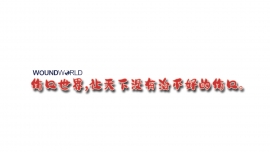
- 星期二, 12 3月 2024
Metformin does not increase risk of GI side effects during GLP-1 RA initiation and titration
Metformin use during initiation and titration of GLP-1 receptor agonists (GLP-1 RAs) does not increase the frequency or severity of gut-related adverse events, or the likelihood of discontinuing the GLP-1 RA, according to this study published in Diabetes Care. Since gastrointestinal (GI) adverse events are common with both metformin and with GLP-1 RAs, data from four major clinical trials of liraglutide and subcutaneous and oral semaglutide were used to explore whether those treated with metformin suffered more GI side effects. The results suggest that pausing metformin therapy during GLP-1 RA initiation, as has been recommended by some, is not required. There was in fact a higher rate of GI adverse events and GLP-1 RA discontinuations in those not taking metformin, which the authors postulate could reflect an increased susceptibility to gut side effects with any drug. They recommend that increased counselling and consideration of slower titration may be helpful in this group. This is useful information to guide practice as a recently published National Drug Safety Alert states that supplies of oral semaglutide are now adequate to support new initiations of this drug, following the mandatory cessation of new initiations of any GLP-1 RA that has been in place since June 2023 due to manufacturing shortages.
Pam Brown
GP in Swansea
Citation: Brown P (2024) Diabetes Distilled: Metformin does not increase risk of GI side effects during GLP-1 RA initiation and titration. Diabetes & Primary Care 26: [Early view publication]
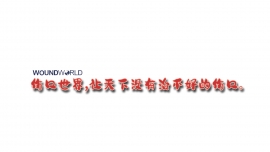
- 星期一, 11 3月 2024
Making the most of the diabetes foot-screening appointment: Think Foot, Think Kidney
Adrian Heald
The School of Medicine and Manchester Academic Health Sciences Centre; University of Manchester, Manchester, and Department of Endocrinology and Diabetes, Salford Royal Hospital, Salford
Mike Stedman
The Research Office, Res Consortium, Andover
Frank Webb
Buxton Hospital, London Road, Buxton
Rena Francis
Buxton Hospital, London Road, Buxton
Michael Edmonds
King’s College Hospital NHS Foundation Trust, London
George Dunn
Department of Podiatry, East Cheshire Trust, Macclesfield
Citation: Heald A, Stedman M, Webb F et al (2024) Making the most of the diabetes foot-screening appointment: Think Foot. Think kidney. Journal of Diabetes Nursing [Early view publication]
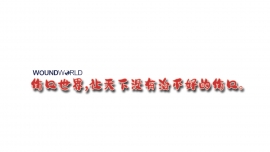
- 星期五, 08 3月 2024
Is artificial intelligence the key to better foot self-care in diabetes?
Andrew Hill
This article explores the growing role of artificial intelligence (AI) in patient self care in diabetes and considers the opportunities and risks associated with it in the context of foot self care in diabetes. AI has yielded many advances in individual and public health, although it does also present unique and emergent challenges. Certainly, AI enables us to consider and re-evaluate diabetes care, screening and management.
Hill A (2023) Is artificial intelligence the key to better foot self-care in diabetes? The Diabetic Foot Journal 26(2): 24–8
Key words
- Artificial intelligence
- Patient knowledge
- Self care
- Technology
Article points
1. Artificial intelligence has been shown to influence and improve certain aspects of diabetes care.
2. Self care and patient education are key to avoiding complications such as diabetic foot ulcers.
3. Artificial intelligence has as-yet unleashed potential in the field of foot self care and ulcer management, especially in the context of patient education and driving foot self-care behaviours.
Author
Andrew Hill is Senior Lecturer and Programme Lead The SMAE Institute.
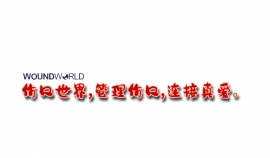
- 星期四, 07 3月 2024
Hybrid closed-loop therapy
In December 2023, NICE published the TA943 guidance, which lays out recommendations for use of hybrid closed-loop (HCL) systems in the management of type 1 diabetes, with a 5-year roll-out plan.1 Even with moderate adoption rates, NICE anticipates that over 57 000 people with type 1 diabetes will end up accessing this technology. Although the treatment and care of people using HCL technology sits within specialist multidisciplinary teams, there are elements of care that are useful for primary care clinicians to know. This factsheet explains what HCL systems are and outlines what primary healthcare professionals need to know to support their use.
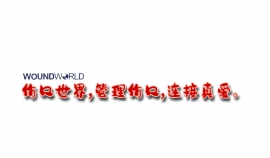
- 星期三, 06 3月 2024
Delays in getting to specialist care for people with diabetes and foot problems. What are the delays and how can we reduce them? A Position Statement from the ZAP Amputation group of FDUK
Louise Morris, Jayne Robbie, Duncan Stang, Catherine Bewsey, Andrew Sharpe, Christian Pankhurst, Krishna Gohil and Michael Edmonds
A crucial barrier to effective diabetic foot care is the delay in accessing specialist care. Delays can take place in three situations:
1. Delay by the person with diabetes in seeking care. A lack of knowledge in the person with diabetes can lead to a lack of urgency in seeking help from a healthcare professional.
2. Delay by healthcare professionals in referring to specialist care. When a person with a foot problem seeks advice, there is sometimes a delay due to failure of a healthcare professional to make a diagnosis
3. Delay in accessing care related to the multidisciplinary diabetic foot team. Referrals from primary and community care to the multidisciplinary foot team are difficult if it meets infrequently or does not exist and that is the situation in some
Hospital Trusts in the UK. Four recommendations to reduce delays are put forward:
1 Formation of a credible multidisciplinary diabetic foot team.
2. Organisation of efficient referral pathways.
3. Establishment an advanced/consultant podiatrist role.
4 Utilisation of the ACT NOW acronym as a triage tool to highlight warning signs leading to amputation.
Citation: Morris L, Robbie J, Stang D et al (2023) Delays in getting to specialist care for people with diabetes and foot problems. What are the delays and how can we reduce them — a Position Statement from the ZAP Amputation group of FDUK. The Diabetic Foot Journal 26(2): 29–38
Key words
- Amputation
- Delays
- Diabetes-related ulcers
- Specialist care
Article points
1. Initial assessment of foot problems in diabetes is carried out in community or primary care. It is, therefore, vital that referral routes for the PwD are robust and well-known to ensure rapid access to the MDFT
2. Delays in accessing specialist MDFT can have catastrophic outcomes for the PwD in terms of tissue loss, amputation and/or early mortality
3. Advanced/consultant podiatrist roles should be developed within each hospital Trust to co-ordinate foot care services for a PwD
4. ACT NOW is a simple, six-stage triage tool to empower the PwD and HCPs to determine if a foot problem requires
Authors
See page 30
Authors
Louise Morris is Principal Podiatrist, Trafford Local Care Organisation Podiatry Department, Trafford General Hospital, Manchester, UK; Jayne Robbie is Senior Podiatrist, University Hospitals Birmingham NHS Trust; Senior Lecturer, Birmingham City University; Duncan Stang is National Diabetes Foot Co-ordinator, Scotland; Catherine Bewsey is Chartered Counselling Psychologist, SWL ICS Foot Network Project, St George’s University Hospitals NHS Foundation Trust; Andrew Sharpe is Advanced Podiatrist, Salford Royal NHS Foundation Trust, UK; Christian Pankhurst is Lead Orthotist, Kings College Hospital, NHS Foundation Trust, London, UK; Krishna Gohil is National Clinical Lead, Lower Limb Wounds National Woundcare Strategy Programme, UK; London, UK; Michael Edmonds is Consultant Diabetologist, Diabetic Foot Clinic, King’s College Hospital, London, UK
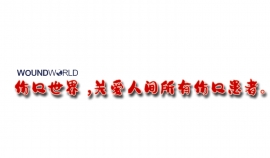
- 星期三, 06 3月 2024
Case report: Pancreatic cancer – assessing diabetes in a thin elderly person
David Morris, Probal Moulik
Symptoms of pancreatic cancer often present late, and most are non-specific and thus misinterpreted Although a rare condition, the prognosis for pancreatic cancer is very poor, with a 5-year survival rate of 7.3%; however, this improves to 30% for early-stage diagnosis Prediabetes or diabetes are found in around 80% of people diagnosed with pancreatic carcinoma and, importantly, are often identified a year or two ahead of this diagnosis Thus, new-onset diabetes represents an opportunity for early detection of pancreatic carcinoma. Through this case report of an older gentleman with new-onset diabetes and a normal BMI, the authors discuss how healthcare professionals can identify people who might be at risk of pancreatic cancer, along with the differential diagnoses, and what actions they should take.
Authors
David Morris, Retired GP and Specialist Doctor in Diabetes, Undergraduate Clinical Tutor, Keele University; Probal Moulik, Consultant Endocrinologist, Shrewsbury and Telford Hospitals NHS Trust.
Citation: Morris D, Moulik P (2023) Case report: Pancreatic cancer – assessing diabetes in a thin elderly person. Diabetes & Primary Care 26: [Early view publication]
